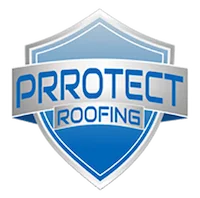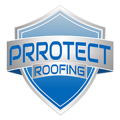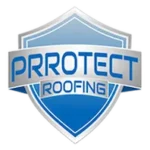Your roof is one of the most important components of your home. It shields you from the elements, keeps your home comfortable, and helps maintain the structural integrity of your property. However, regardless of the type of roofing material used, roofs require regular maintenance to remain effective and prolong their lifespan. Roofs come in a variety of materials, each with its own maintenance needs. This blog will guide you on how to care for asphalt, metal, and tile roofs, ensuring that they last and continue to provide the protection your home needs.
Learn how to care for your asphalt, metal, and tile roof to ensure they last. This guide offers expert roof maintenance advice tailored to each material.
Asphalt Roof Maintenance
Asphalt shingles are one of the most commonly used roofing materials due to their affordability, ease of installation, and versatility. Although asphalt roofs are durable, they require regular maintenance to extend their lifespan and maintain their effectiveness. Here are the essential steps for maintaining your asphalt roof:
Inspect Shingles for Damage
The shingles on your asphalt roof are the first line of defense against the elements. Over time, exposure to sun, wind, and rain can cause the shingles to wear down, curl, crack, or become loose. To maintain the effectiveness of your roof, inspect the shingles regularly for signs of damage. Look for shingles that are missing, cracked, curled, or blistering. If you spot any damaged shingles, replace them as soon as possible to prevent water infiltration and further deterioration of the roof.
Additionally, check for granule loss, as asphalt shingles tend to shed granules over time, especially after heavy rainfall or storms. Granules protect the shingles from UV damage and wear, so a significant loss of granules can compromise the roof’s ability to provide proper protection.
Keep Gutters and Downspouts Clean
A common cause of roof damage is clogged gutters. When leaves, twigs, or other debris accumulate in your gutters, water can overflow onto the roof, creating potential for leaks and water damage. To prevent this, clean your gutters and downspouts at least twice a year, or more frequently if you live in an area with heavy tree cover. This will ensure that water flows freely from the roof, minimizing the risk of water buildup.
If your gutters are clogged, water can also pool on the roof, increasing the risk of leaks. It’s also important to ensure that the gutters are securely fastened and that downspouts direct water away from the foundation of your home. Clogged gutters and downspouts can exacerbate roof damage and contribute to more significant problems over time.
Check for Moss and Algae Growth
In humid or shady areas, moss and algae can grow on your asphalt roof. Moss can trap moisture against the shingles, which can cause them to deteriorate over time. Algae, although less harmful, can leave unsightly dark streaks on your roof. If you notice moss or algae growth, it’s important to address it promptly.
Moss and algae can often be removed with a soft brush or low-pressure washer. Be sure to use a cleaner specifically designed for roofing materials, as harsh chemicals or high-pressure washing can damage the shingles. If the problem persists, you may want to apply a moss or algae inhibitor to prevent future growth.
Maintain Flashing and Seals
Flashing is the material used to seal joints, edges, and penetrations on the roof, such as around chimneys, skylights, and vents. Over time, flashing can deteriorate due to weather exposure or natural settling of the roof. This can create gaps and allow water to penetrate, leading to leaks and water damage.
Check the flashing around your roof’s joints and penetrations regularly to ensure it is intact and functioning properly. Look for signs of rust, corrosion, or gaps, and replace or reseal any areas that are compromised. Proper maintenance of flashing can help prevent costly leaks and water damage.
Metal Roof Maintenance
Metal roofs are known for their durability and longevity, often lasting 50 years or more with proper care. They are resistant to extreme weather conditions, fire, and pests, making them a popular choice for homeowners looking for a low-maintenance roofing option. However, like all roofs, metal roofs still require periodic maintenance to maintain their performance.
Inspect for Corrosion and Rust
While metal roofs are highly durable, they are not immune to corrosion or rust, particularly in coastal areas or areas with high humidity. It’s essential to regularly inspect your metal roof for signs of rust or corrosion, particularly in areas where water accumulates, such as valleys or around flashing. If you notice any rust spots, clean them off using a wire brush and apply a rust-resistant coating to prevent further damage.
For homes in coastal areas, where salt and moisture can accelerate rusting, it’s particularly important to maintain the integrity of the metal roof. If you live in such an environment, consider applying a protective coating to your metal roof to protect it from corrosion and extend its lifespan.
Check Fasteners and Seals
The fasteners that hold a metal roof in place are vital for maintaining the roof’s stability and performance. Over time, fasteners may become loose due to temperature fluctuations, high winds, or general wear. Check all screws, bolts, and fasteners to ensure they are secure and have not loosened. If you find any missing or damaged fasteners, replace them immediately.
Additionally, inspect the seals around vents, chimneys, and roof edges. Over time, seals can crack or deteriorate, allowing water to seep through. Reseal any areas where the sealant has degraded to prevent leaks.
Remove Debris and Keep Roof Clean
Leaves, branches, and other debris can accumulate on your metal roof, particularly in valleys or around skylights. Over time, this debris can trap moisture against the roof, leading to rust and corrosion. Regularly remove debris from the roof using a broom or a leaf blower. Be careful not to scratch or damage the metal surface. Also, check the gutters to ensure they are free from blockages.
If you live in an area with heavy snowfall, remove snow and ice from your metal roof to prevent it from becoming a burden on the roof structure. Use a snow rake with a soft edge to avoid damaging the roof’s surface.
Prevent Ice Dam Damage
In colder climates, metal roofs are less prone to ice dams than other roofing materials. However, ice dams can still form in valleys and along roof edges if snow and ice are not cleared properly. To prevent ice dam buildup, ensure that your attic is properly insulated and ventilated. This will help maintain a consistent temperature on the roof surface and reduce the likelihood of ice buildup.
Tile Roof Maintenance
Tile roofs, particularly those made from clay or concrete, are known for their durability and longevity. Tile roofs can last for 50 years or more with proper care. However, they require specific maintenance to ensure that they continue to protect your home effectively.
Inspect for Cracked or Broken Tiles
Tile roofs are more prone to damage from impact, such as falling branches or debris, than asphalt or metal roofs. Regularly inspect the tiles for cracks, chips, or broken pieces. If you notice any damaged tiles, replace them immediately to prevent water from infiltrating the roof structure. Be sure to use tiles that match the existing ones to maintain the roof’s appearance and functionality.
Tile roofs are durable, but individual tiles can crack or break over time due to extreme weather conditions, aging, or physical impact. Regularly checking for damage can prevent leaks and costly repairs.
Check the Underlayment
The underlayment of a tile roof is just as important as the tiles themselves. The underlayment is a layer of material that sits beneath the tiles, providing an additional barrier to prevent water from entering the home. Over time, the underlayment can become damaged or degraded. If you suspect any issues with the underlayment, have it inspected by a professional roofing contractor.
Clean the Roof and Gutters
Tile roofs require regular cleaning to maintain their appearance and prevent damage from debris. Remove leaves, twigs, and dirt from the roof regularly. A soft brush or broom can be used to clean the surface without damaging the tiles. Avoid using pressure washers, as they can dislodge tiles or damage the surface.
Additionally, clean the gutters regularly to ensure proper water flow. Clogged gutters can cause water to back up onto the roof, increasing the risk of leaks and water damage.
Inspect Flashing and Seals
Flashing is an essential part of any roof, including tile roofs. Flashing seals joints and areas around chimneys, vents, and skylights. Regularly inspect the flashing for any cracks, gaps, or damage. If you notice any issues, reseal the flashing to maintain the roof’s waterproof barrier.
General Roof Maintenance Tips for All Roof Types
While each roof type requires specific maintenance, there are general upkeep practices that apply to all roofs. Regular maintenance and attention to detail can help prolong the lifespan of your roof, regardless of the material.
Regular Inspections
All roofs should be inspected at least twice a year—once in the spring and once in the fall. Inspections should also be done after significant weather events, such as storms or heavy snow. Early detection of issues allows you to address them before they develop into major problems.
Keep Your Roof Clean
Cleaning your roof helps remove debris that can cause damage. Regularly clean the roof and gutters to prevent water buildup and keep your roof functioning properly. Be sure to remove moss, algae, or mold, which can damage roofing materials over time.
Proper Ventilation
Proper ventilation in the attic is critical for maintaining the performance of your roof. Ventilation allows heat and moisture to escape, preventing damage to the roof structure and reducing the risk of mold growth. Ensure that your roof is properly ventilated to maintain its integrity and energy efficiency.
Hire a Professional for Major Repairs
While homeowners can often perform basic maintenance, it’s advisable to hire a professional roofer in St.Peters, Fenton & Ballwin for more extensive repairs. A professional will have the expertise and tools to identify hidden issues and provide solutions that can prevent costly damage down the line.
Proper Roof Maintenance is Essential for Every Roof Type
Regardless of the type of roof you have, regular maintenance is essential for extending its lifespan and keeping it functioning properly. Asphalt, metal, and tile roofs each have unique maintenance needs, but all require attention to prevent leaks, water damage, and deterioration. By following these maintenance tips, you can ensure that your roof continues to protect your home for many years, saving you money on repairs and replacements. At Prrotect Roofing, we have extensive experience working with various roof types, we provide expert care for all roofing materials, ensuring longevity and performance.
FAQs
How do I maintain a metal roof?
Inspect your metal roof regularly for corrosion or rust, clean it of debris, and check fasteners and seals. Reseal any areas where the sealant has worn off to prevent leaks.
What is the best way to care for a tile roof?
Inspect the tiles for cracks or damage, clean the roof regularly, and check the underlayment for wear. Maintain flashing and seals to ensure water is kept out.
Can I maintain my roof myself, or should I hire a professional?
Basic maintenance, such as cleaning and inspections, can be done by homeowners. However, for more extensive repairs, it’s best to hire a professional roofing contractor.


